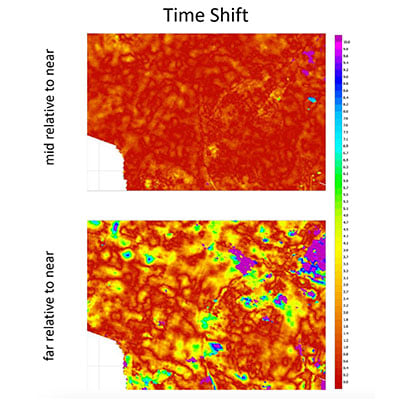Sharing our knowledge with the industry is an important facet of how we do business. Below you will find some articles written by Sound QI experts that explain key steps in the QI workflow and reveal practical information about the real-world benefits of our services and software. Watch this page as we continue to add chapters. For more information please contact us.
Rock Physics
Rock-physics links the geological properties of rocks to the elastic properties measured from seismic data. One key use of rock-physics in quantitative interpretation is to build templates that help interpret crossplot behaviour. These templates are constructed from individual models, where elements of the rock’s composition are varied in a systematic way. This modelling allows for scenarios which are not encountered by the wells to be tested. Rock physics models are calibrated to existing log and core data and incorporate all relevant reservoir data provided.
Seismic Feasibility
The function of a seismic feasibility study is to investigate the potential for obtaining reliable elastic attributes from the seismic data using AVO and pre-stack inversion. The study involves determining if there are any limitations to the data that will impact assumptions, approximations, parameter selections, or confidence in the workflow and final results.In doing so, the investigation will provide an understanding of the uncertainty in inversion results due to any data issues and demonstrate what steps would be necessary to improve the outcome of an inversion. Solutions and recommendations for dealing with the data will be presented.
Seismic Inversion: AVO Inversion
The inversion of seismic data extends geophysical value beyond the anomaly-hunting approach of AVO crossplots and into quantitative characterization of the reservoir. Using the amplitude behaviour of reflections, AVO inversion obtains meaningful elastic properties for the zone of interest. When used in conjunction with well analysis or rock-physics modelling, the results of AVO inversion help classify the reservoir into geological properties. On their own, elastic properties can be used to calculate reservoir or other layer properties of interest for exploration, development, geomechanics, and engineering purposes.



